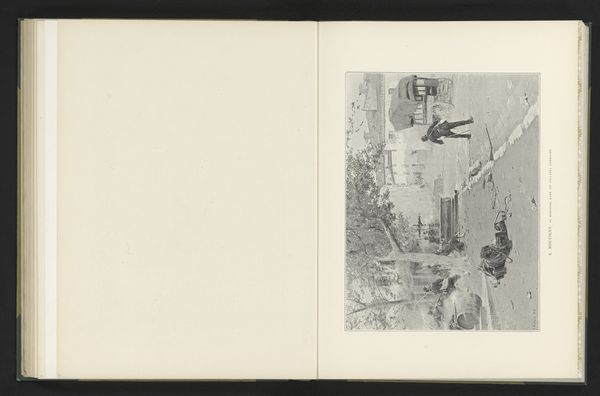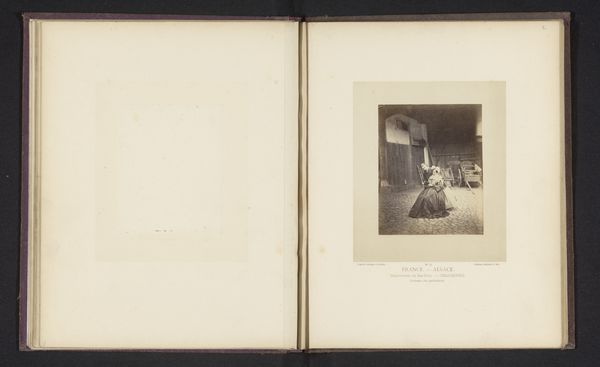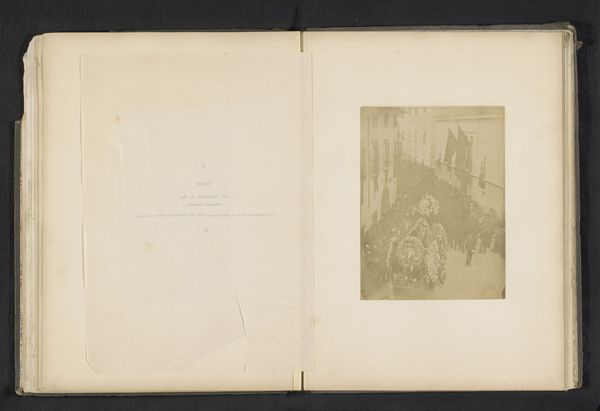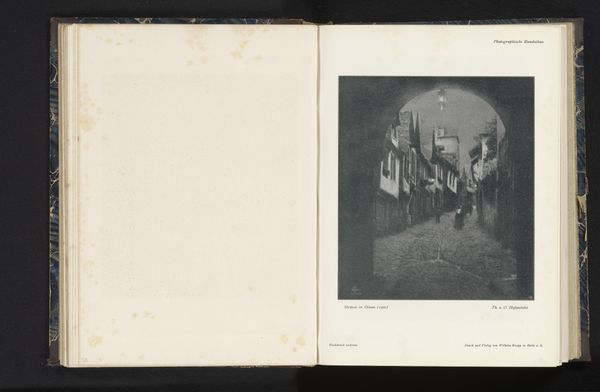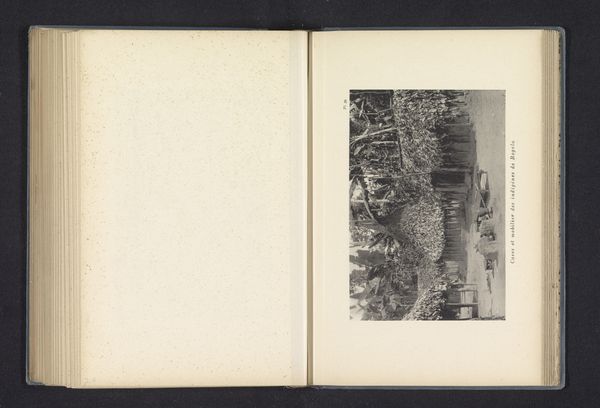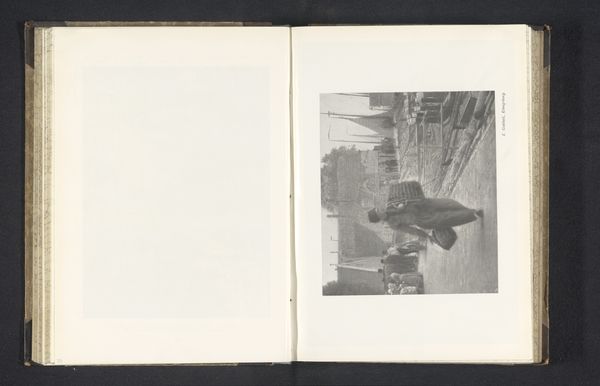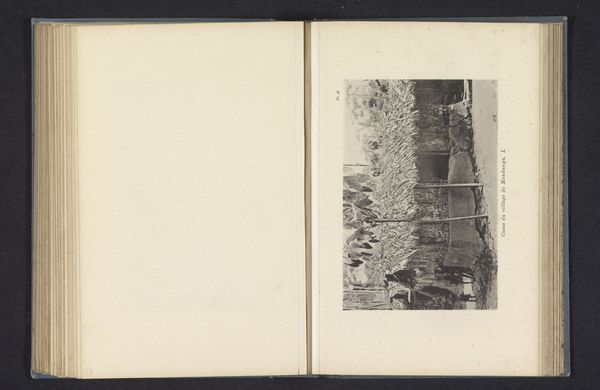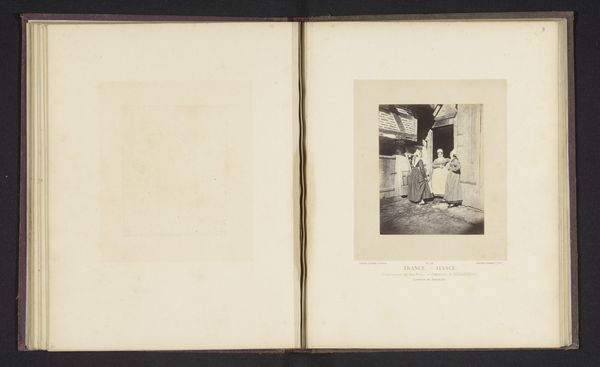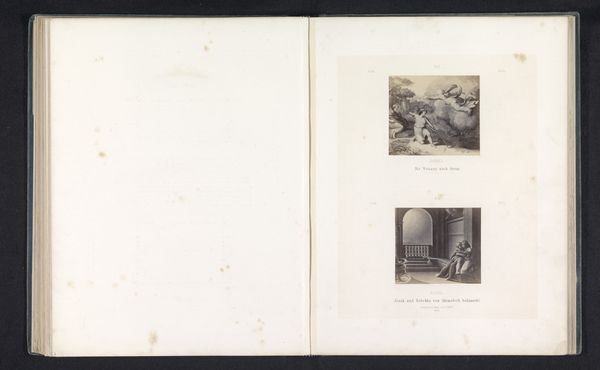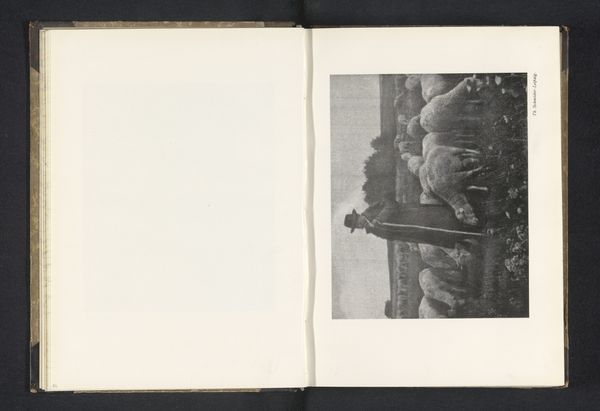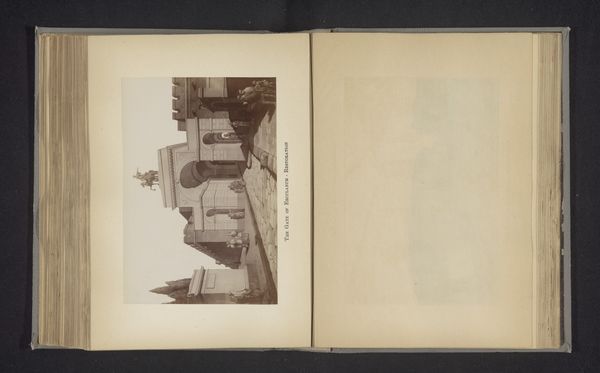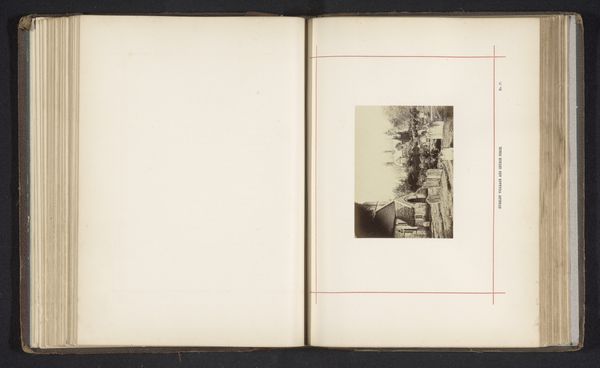
print, photography, gelatin-silver-print
#
portrait
# print
#
landscape
#
photography
#
gelatin-silver-print
#
genre-painting
#
realism
Dimensions: height 217 mm, width 101 mm
Copyright: Rijks Museum: Open Domain
Editor: Here we have "Vrouw bij een waterput," or "Woman at a Well," a gelatin-silver print by Jules Liorel, created sometime before 1900. It's so subdued; almost dreamlike. I’m intrigued by its seemingly simple portrayal of everyday life. What do you see in this piece, particularly beyond the immediately visible scene? Curator: Well, I immediately focus on the materiality. This isn’t just a captured image; it’s a gelatin-silver print. Think about the process: light interacting with chemicals on treated paper, the photographer’s darkroom labor. That materiality directly connects to the sitter in the print, too, a woman drawing water. What are the means of her production, her labor? Water as a commodity then and now, accessed in fundamentally different ways by different people. Editor: That's fascinating, thinking of the process and labor involved. It brings the piece to life beyond just the aesthetic. I hadn't considered the social commentary embedded in such a simple scene. Curator: Exactly. The "genre-painting" aspect emphasizes that this isn't about idealized beauty, but about representing a particular kind of labor within a social structure. Consider also the circulation of such images – gelatin-silver prints democratized photography but who had access to even that much? Where was this print intended to be consumed, and by whom? It prompts questions about class and representation, doesn’t it? Editor: It certainly does. I’m seeing the work as a product of its time, shaped by the available technology and the prevailing social dynamics, but also reflecting them. Thank you for widening my understanding of photography in the 19th Century! Curator: It goes both ways. Thinking about it in this manner allows for art appreciation with a more material consciousness. It makes looking so much more vital.
Comments
No comments
Be the first to comment and join the conversation on the ultimate creative platform.
